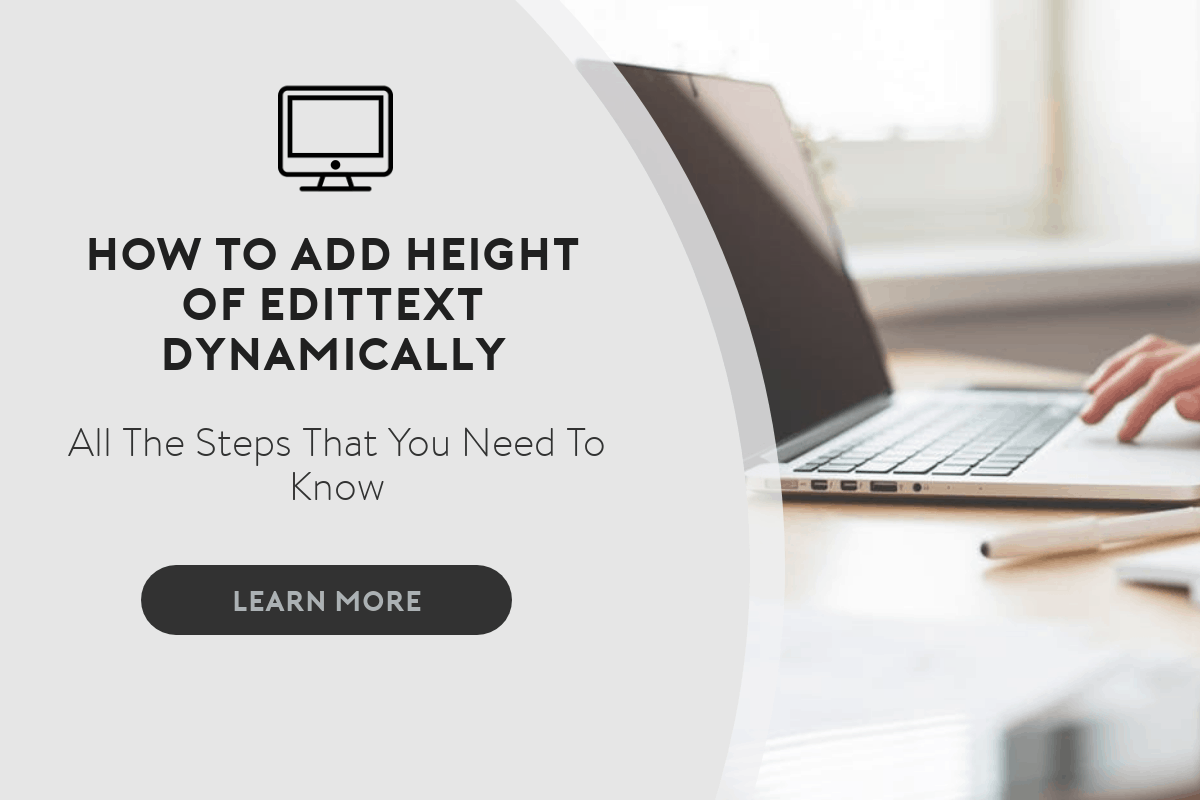How to add height of edittext dynamically is as easy as ABC. There are times when you want to be able to edit the text on your android phone, that is where Editext comes in. Now, if you want an in-depth explanation of Edittext and how to add the height of it, then visit Brighter Guide. In the meantime, let us take some small easy steps to add the height of edittext.

Read more on Brighter Guide
- Top 16 Best Webinar Software Platforms for 2023 (Reviewed)
- 5 Best Password Manager for Windows/Mac/Android in 2023!
- League of Legends Download v10.16 for PC/Mac (Latest) 2023
- Download Hotstar for PC Windows 7/8/8.1/10/XP Laptop
- Psiphon 3 Download for PC Windows 7/8/8.1/10 or XP Laptops
What is edittext?
Edittext is when you, as a user, want to redefine over TextView to make it editable. In short, it is a predefined kind of TextView that contains rich editing capabilities.
Adding Height of Edittext
In order to change the default length of EditText we need to create a movable xml file with shape tag. Remember that this step can also be applied when you want to add width of edittext.
- First, the shape should be rectangular.
- Second, by using a size tag we can set the width of the cursor.
- Third, by using a solid tag we can set the color of EditText cursor.
To adjust the length of the cursor we have to make use of padding tag, with attributes android:bottom and android:top we can trim or lengthen the cursor height. This could be really handy when you are creating a default EditText with ruled lines (like a notebook).
Helpful codes
So you need your layout file put
android:textCursorDrawable=”@drawable/editext_cursor” to the EditText tag in the activity.xml file.
activity_main.xml
<RelativeLayout xmlns:android=”http://schemas.android.com/apk/res/android“
xmlns:ebm=”http://schemas.android.com/apk/res-auto“
xmlns:tools=”http://schemas.android.com/tools“
android:layout_width=”match_parent”
android:layout_height=”match_parent”
android:background=”#f2f2f2″
android:paddingBottom=”@dimen/activity_vertical_margin”
android:paddingLeft=”@dimen/activity_horizontal_margin”
android:paddingRight=”@dimen/activity_horizontal_margin”
android:paddingTop=”@dimen/activity_vertical_margin”
tools:context=”.MainActivity”>
<EditText
android:id=”@+id/view”
android:layout_width=”fill_parent”
android:layout_height=”fill_parent”
android:scrollbars=”vertical”
android:textCursorDrawable=”@drawable/editext_cursor”
android:textSize=”20sp”>
</EditText>
</RelativeLayout>
Alternative method
In Android, WindowManager is ready for every activity. We can get the metrics of default display in which the activity is being shown on WindowManager.
To get Android screen width and height dynamically,
- First, make a DispalyMetrics() object.
- Second, to getMetrics() method of Display class, we need to pass the displayMetrics object.. WindowManager.defaultDisplay() returns the Display object.
- Third, using displayMetrics.widthPixels, screed Width should be obtained.
- Lastly, by using displayMetrics.heightPixels, Screen Height could be obtained
Remember: For your input text component, you can also use an EditText. However, using it allows TextInputLayout more control over the visual aspects of the input text. Basically, it allows TextInputLayout to display signs in the text field when in “extract mode” (such as landscape mode).
Pros and cons
With changing the height of edittext on your android phone, you can do almost anything in terms of editing your textview. Of course, with a bigger viewing screen this time. As for the cons, no common issues have been reported yet, except for the users not being able to follow instructions.
FAQ
The answer is simple. TextView is for viewers to be able to see the content of the message such as text messages, photos, etc. EditText is for the users to be able to make changes in the content of the text message.
This is a special type of EditText designed as a child of TextInputLayout.
EditText is an overlay over TextView that can make itself editable. It is a kind of TextView with text editing features. It is most of the time used in our applications to provide an input or text field, especially in forms.
The length limit of edittext is 6 characters. However, if you make a new InputFilter and set it into EditText, you will lose all other defined filters that you might have added either through XML or using a program. It limits the maximum length of the EditText widget to 6 characters.
Conclusion
In this article, we have discussed how to add expand edittext vertically and added some points on how to add width as well. It sounds a little complicated but when you try it, it can be very simple.
Has this article helped you with your question? If you have other ways by which we can add height of edittext, feel free to share it with us.